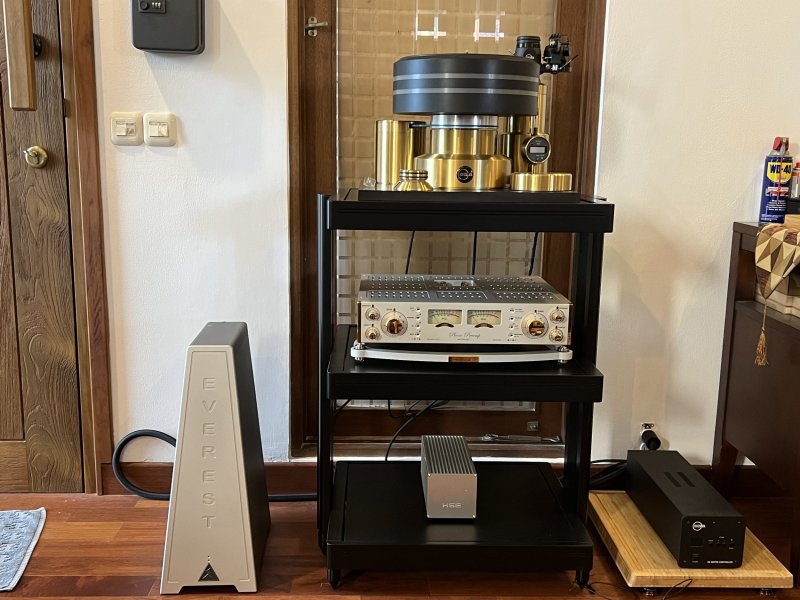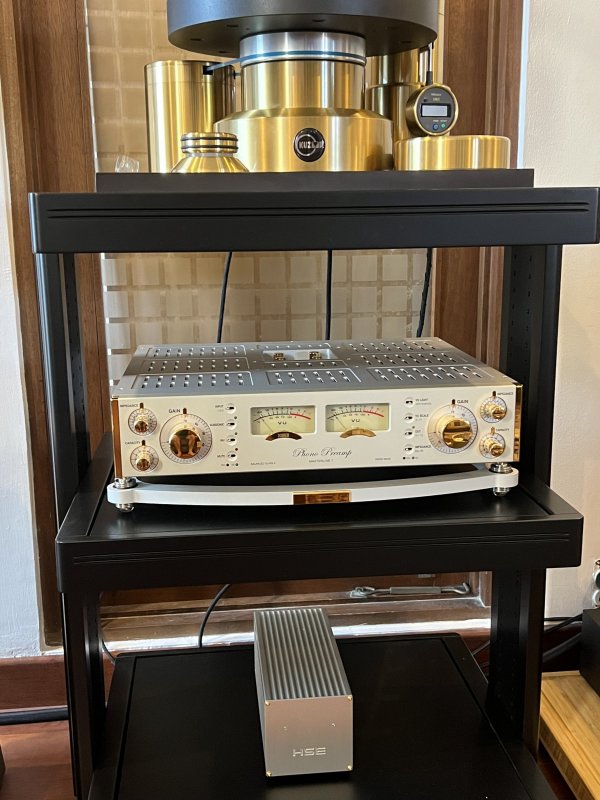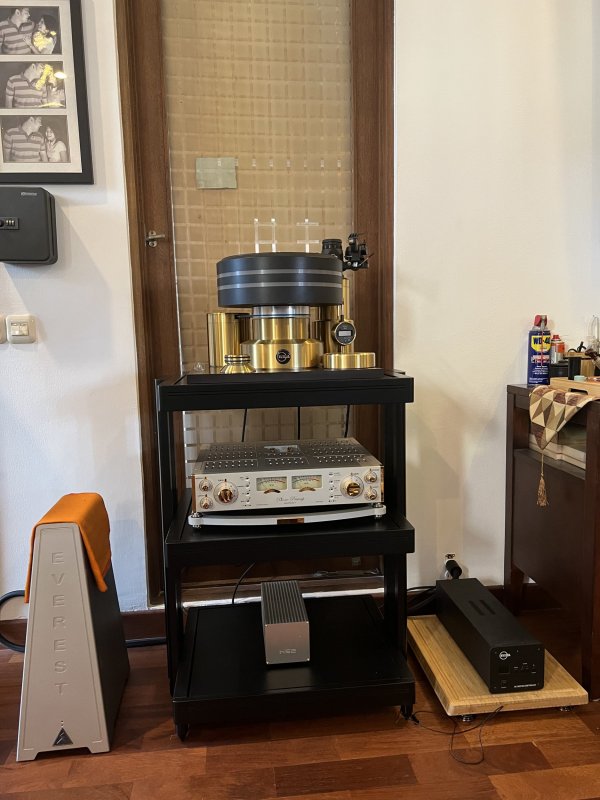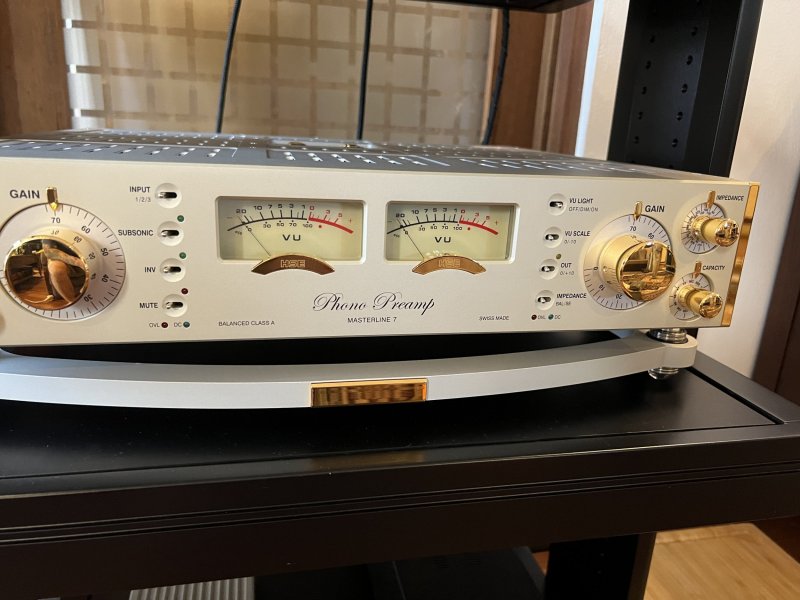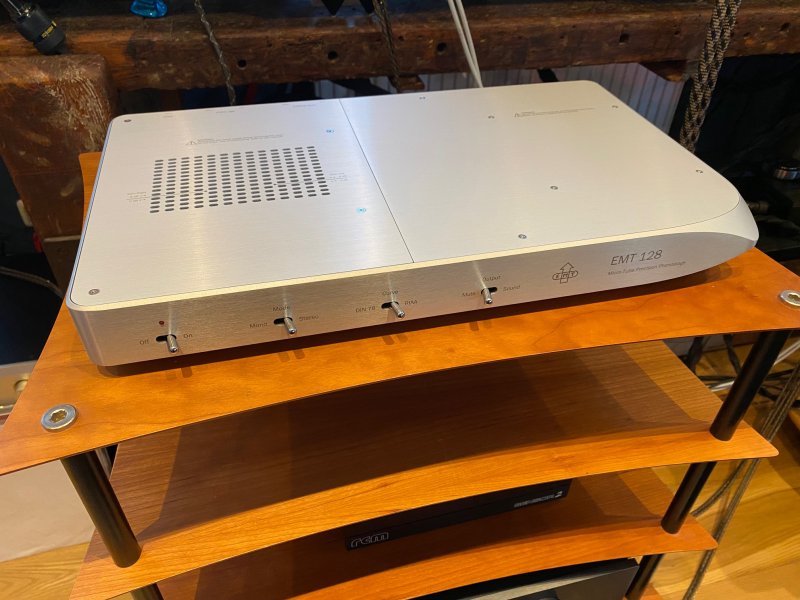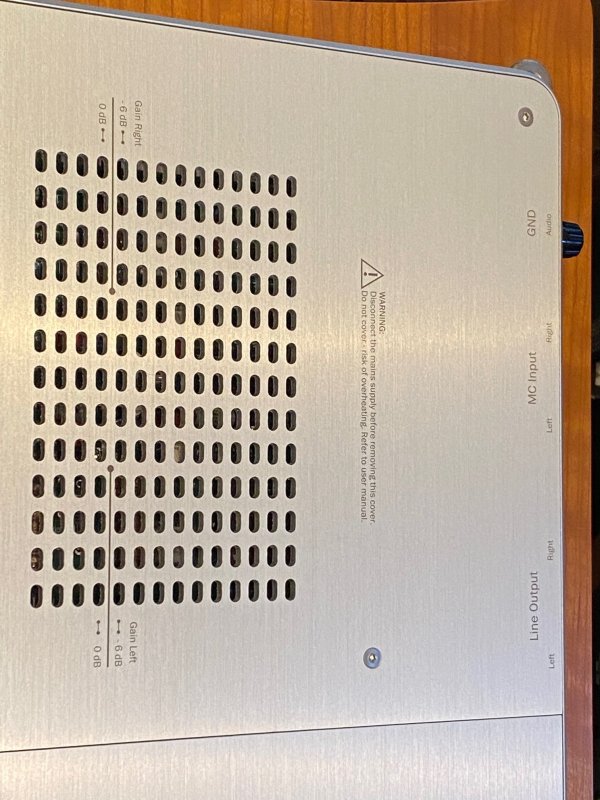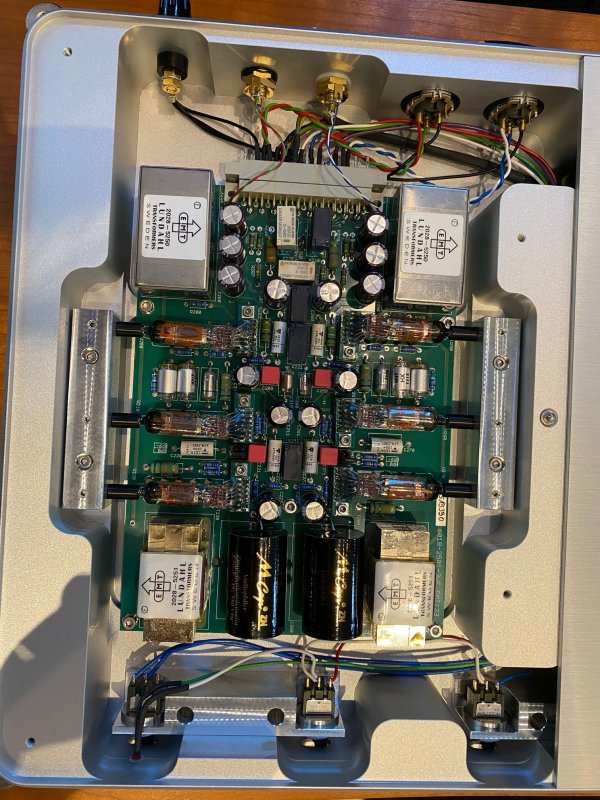The shielding does takes work, Slagle also has a multi layer approach. After the obvious challenge of winding a great SUT ( including core choice ) shielding is the next big step...
Current “Best Bet” SOTA Phono
- Thread starter Uwiik
- Start date
You are using an out of date browser. It may not display this or other websites correctly.
You should upgrade or use an alternative browser.
You should upgrade or use an alternative browser.
Might be awesome- I know Hashimito is good stuff...yet at those prices I would probably be looking at Emia or Silvercore pro- both in silver windings...or at a lower click Lundahl, also in silver.
I reiterate- have not heard the Astor. Just an opinion based on my perspective and experience.
I reiterate- have not heard the Astor. Just an opinion based on my perspective and experience.
Hello Cdupree,Thanks for the suggestions Dan31. I appreciate it. Im pretty sure I would love the sound of the Aestethix Io, but worry about tube noise with my Avantgarde Duo XD’s. I have not figured out how to have my system components show up at the bottom of my posts.
Hi Solypsa, excellent suggestion and I should follow up on that.
Are you experiencing any tube noise with any of your current tubed phono stages?
Another suggestion for your consideration would be the Wavestream Kinetics Deluxe Reference Level 5.1.
It is an all tube design currently using (2 x 12AX7, 4 x 6DJ8); with extremely low noise ( I believe with the external power supply, noise is below 1uV (one-millionth of a volt ) competing with the best of the solid state phonos; providing 3 front panel selectable inputs providing 62 dB of gain (without the use of SUT’s or FETS) with a useful cartridge range of 0.2mV to 1.2mV. Having both Balanced and RCA inputs and outputs; adjustable loading available on the back panel via custom loading plugs; and an essentially flat RIAA EQ curve within one tenth of a dB (.1dB) from 3 Hz to 40 Khz.
Naturally, with any tubed phono high gain phono stage you will want to use selected low noise tubes, but I can say when using my NOS Mullards in this phono stage, it is dead quiet with my ears up against the speakers with my Dunlavy Signature SCIV's 91 dB sensitivity. I love not having to use a step up transformer with this phono stage; not having to worry about the SUT coloring the audio signal, worrying about possible hum issues, and having to use extra interconnects and connections, etc.
The Wavestream Kinetics gives me the pure, high gain, low noise sound that I love. It is incredibly dynamic in both the micro and macro sense, has the "meat on the bones" which you crave, brings the human voice to life, showcases the resonance of the body of cellos and acoustic bass, has the finesse for brushes on cymbals, etc. It truly is an incredible phono stage built by Scott Frankland who offers incredible customer service and support, which is the icing on the cake.
Best wishes,
Don
Just did a shoot-up among 3 world class phono and here’s my write up in Chinese, JMF is my recommendation based on the sound and functionality.
 www.hiendy.com
www.hiendy.com
三台頂級唱放的對談 - 兩聲道音響討論區 - Hiendy.com 影音俱樂部 - Powered by Discuz!
這段時間沈迷於黑膠。自從2019重入黑社會,一發不可收拾,在“涉黑”的道路上越走越遠。一直費解論壇上關於CD與黑膠的音質之爭,其實有什麽好爭的,在hiend領域黑膠音質好 ... 三台頂級唱放的對談 ,Hiendy.com 影音俱樂部
Generally speaking, if you have to load a LOMC cartridge to get it to sound right you have a problem in the phono section- its responding to the RFI (Radio Frequency Interference) that is generated by the cartridge and the tonearm cable (they form an electrical resonance, usually at a very high frequency and can be up to 2MHz). Put another way, the loading is for the benefit of the phono section, not the cartridge. The RFI can cause the phono section to sound bright. The resistor serves to detune the electrical resonance, thus getting rid of the RFI.adjustable loading available on the back panel via custom loading plugs;
If the phono section has poor high frequency overload issues, this can also result in extra ticks and pops that sound for all the world as if they are on the LP.
One consequence of loading is that you are asking the cartridge to do more work. The industry standard for cartridge loading is 47,000 Ohms; when you ask it to drive 100 Ohms instead you are asking for a couple of orders of magnitude more work- and this causes the cantilever to be stiffer as a result. This in turn affects the mechanical resonance of the cartridge/arm combination. If that causes it to get out of the 7-12Hz window you can have a tracking problem. The stiffer cantilever might also affect the cartridge's ability to trace higher frequencies since it will be less supple.
IMO the best phono sections made will sound right without any cartridge loading. But you do want to have loading available if you use high output cartridges (usually MM); they need proper loading to sound right since they have so much more inductance.
That’s quite couter-intuitive to be honest, common sense tells me LOMC cartridges need more loading options than MM do, isn’t it? Can you elaborate more on this?Generally speaking, if you have to load a LOMC cartridge to get it to sound right you have a problem in the phono section- its responding to the RFI (Radio Frequency Interference) that is generated by the cartridge and the tonearm cable (they form an electrical resonance, usually at a very high frequency and can be up to 2MHz). Put another way, the loading is for the benefit of the phono section, not the cartridge. The RFI can cause the phono section to sound bright. The resistor serves to detune the electrical resonance, thus getting rid of the RFI.
If the phono section has poor high frequency overload issues, this can also result in extra ticks and pops that sound for all the world as if they are on the LP.
One consequence of loading is that you are asking the cartridge to do more work. The industry standard for cartridge loading is 47,000 Ohms; when you ask it to drive 100 Ohms instead you are asking for a couple of orders of magnitude more work- and this causes the cantilever to be stiffer as a result. This in turn affects the mechanical resonance of the cartridge/arm combination. If that causes it to get out of the 7-12Hz window you can have a tracking problem. The stiffer cantilever might also affect the cartridge's ability to trace higher frequencies since it will be less supple.
IMO the best phono sections made will sound right without any cartridge loading. But you do want to have loading available if you use high output cartridges (usually MM); they need proper loading to sound right since they have so much more inductance.
Yes.common sense tells me LOMC cartridges need more loading options than MM do, isn’t it? Can you elaborate more on this?
LOMC cartridges have very little inductance and the coil is tightly wound to be as light and easy to move as possible. To this end it has (in radio parlance) a high Q factor (Q standing for Quality). When that inductance is in parallel with the capacitance of the tonearm cable, it forms a tuned Radio Frequency circuit- an inductor and capacitor in parallel is how any radio is tuned to a station.
The peak of this resonance is quite sharp owing to the Q of the inductor. Even though the cartridge can't make energy anywhere near the frequency of the resonance, the energy can activate the peak. When this happens, the peak is said to be in 'excitation'. At that point it is oscillating at the frequency defined by the inductance and the capacitance, and this energy is injected directly into the input circuit of the phono preamp. In a word: Yikes!
To me the odd thing is that many designers seem to think that all you need is enough gain with low noise and the proper EQ while ignoring the implications of the cartridge inductance!
The inductance of a typical LOMC cartridge is way too low to for loading to affect it at audio frequencies. I experimented with this by running a square wave through a LOMC cartridge- what you see is a perfect square wave whether the cartridge is there or not over the entire range of 20Hz-20KHz. Clearly loading the cartridge isn't having any effect on the cartridge at all- so there has to be another explanation.
The theory for 'cartridge loading' is supposed to be that the loading removes ringing and this is certainly true of high output cartridges. But not of low output cartridges- its because the phono section isn't happy with the RFI. If OTOH if the phono section doesn't care about the RFI, the loading won't be needed.
I like the performance and sonic blend of the Phasemation products.
Their Top Model EA-2000 was always a little bit too much for me (6 boxes), so I am only using the T-2000 step up with my Allnic H-7000v phono stage. But now they have announced a new model, the full tube plus step up Design EA-1200, which is a three chassis model.
I liked the concept so much, that I just ordered one .
 www.phasemation.jp
www.phasemation.jp
Will be an interesting comparison to Zanden and Allnic
Their Top Model EA-2000 was always a little bit too much for me (6 boxes), so I am only using the T-2000 step up with my Allnic H-7000v phono stage. But now they have announced a new model, the full tube plus step up Design EA-1200, which is a three chassis model.
I liked the concept so much, that I just ordered one .
Phasemation フェーズメーション
Phasemation フェーズメーションのホームページ。製品に関する情報やサポートの案内、イベント情報などを掲載しています。
Will be an interesting comparison to Zanden and Allnic
A common problem is when a phono preamplifier doesn't provide enough gain, good cartridges can sound lifeless. example ortofon mc 30 super classic (0.2mV) with 62-64 db an average cartridge. with 70db amplification a killer cartridge sounds like 3500 € ortofon a 90. you think it was broken beforehand.
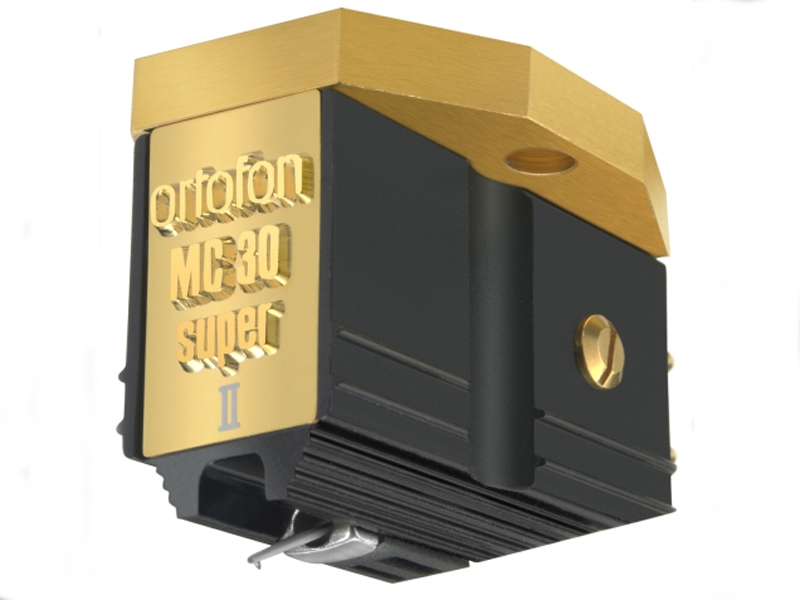
 www.hifi12a.de
www.hifi12a.de
Really a bargain with the right gain, my tip always try out all the amplification levels that are possible

Ortofon MC 30 Super II Classic
Ein Klassiker unter den MC-Tonabnehmern von Ortofon. Hervorragende Wiedergabeeigenschaften, aufwändiger Nadelschliff. Passend für alle Musikrichtungen. In Verbindung mit hochwertigen Phono-Vorstufen ein Spielpartner ohne Fehl und Tadel!
Really a bargain with the right gain, my tip always try out all the amplification levels that are possible
Generally speaking, if you have to load a LOMC cartridge to get it to sound right you have a problem in the phono section- its responding to the RFI (Radio Frequency Interference) that is generated by the cartridge and the tonearm cable (they form an electrical resonance, usually at a very high frequency and can be up to 2MHz). Put another way, the loading is for the benefit of the phono section, not the cartridge. The RFI can cause the phono section to sound bright. The resistor serves to detune the electrical resonance, thus getting rid of the RFI.
If the phono section has poor high frequency overload issues, this can also result in extra ticks and pops that sound for all the world as if they are on the LP.
One consequence of loading is that you are asking the cartridge to do more work. The industry standard for cartridge loading is 47,000 Ohms; when you ask it to drive 100 Ohms instead you are asking for a couple of orders of magnitude more work- and this causes the cantilever to be stiffer as a result. This in turn affects the mechanical resonance of the cartridge/arm combination. If that causes it to get out of the 7-12Hz window you can have a tracking problem. The stiffer cantilever might also affect the cartridge's ability to trace higher frequencies since it will be less supple.
IMO the best phono sections made will sound right without any cartridge loading. But you do want to have loading available if you use high output cartridges (usually MM); they need proper loading to sound right since they have so much more inductance.
Although your arguments are solid, if a manufacturer designs his cartridge to be loaded with a defined low impedance charge he surely tunes all its electro-mechanical parameters for such load. Why should we prefer to operate it out of the his supposedly optimal choice?
HIFi News used to show graphs of frequency response at 100or 200 and 47 kohm load and many MC cartridges showed a rising frequency response if operated at 47 kohm.
I'd like to see how they conducted that testing!if a manufacturer designs his cartridge to be loaded with a defined low impedance charge he surely tunes all its electro-mechanical parameters for such load. Why should we prefer to operate it out of the his supposedly optimal choice?
Regarding this question, I think what you'll find is they have 'recommended' loading values but don't actually design for that. The cartridge manufacturer can't know if you have a competent phono section or not; if not then they have to recommend a load value while having also no idea how much capacitance you have in the tonearm cable (this resonance issue BTW is why a tonearm cable is low capacitance but even then might vary by 50% or more from one cable to the next and of course length plays a role). So the 'recommended' value is an approximation/worst case scenario at best.
Have you ever made a test along these lines using your preamps? To show what you are saying (btw which I am inclined to believe, and which you have stated many times...)!I'd like to see how they conducted that testing!
I am sure you are busy redefining amp technologies but us vinyl guys are always keen to advance the understanding of the art...at least I am.
Thanks for your suggestion Don. I’ll checkout Scott’s phono preamp. His
designs have always been highly regarded, but I’ve never had a chance to hear any.
Thoress is very quiet and the Fono makes a little noise on my 101db horns with a low output cartridge. It seems better suited to .30mv or above. Also, the loading is fixed on the Fono.
Best, Pat
designs have always been highly regarded, but I’ve never had a chance to hear any.
Thoress is very quiet and the Fono makes a little noise on my 101db horns with a low output cartridge. It seems better suited to .30mv or above. Also, the loading is fixed on the Fono.
Best, Pat
Hello Ralph,Generally speaking, if you have to load a LOMC cartridge to get it to sound right you have a problem in the phono section- its responding to the RFI (Radio Frequency Interference) that is generated by the cartridge and the tonearm cable (they form an electrical resonance, usually at a very high frequency and can be up to 2MHz). Put another way, the loading is for the benefit of the phono section, not the cartridge. The RFI can cause the phono section to sound bright. The resistor serves to detune the electrical resonance, thus getting rid of the RFI.
If the phono section has poor high frequency overload issues, this can also result in extra ticks and pops that sound for all the world as if they are on the LP.
One consequence of loading is that you are asking the cartridge to do more work. The industry standard for cartridge loading is 47,000 Ohms; when you ask it to drive 100 Ohms instead you are asking for a couple of orders of magnitude more work- and this causes the cantilever to be stiffer as a result. This in turn affects the mechanical resonance of the cartridge/arm combination. If that causes it to get out of the 7-12Hz window you can have a tracking problem. The stiffer cantilever might also affect the cartridge's ability to trace higher frequencies since it will be less supple.
IMO the best phono sections made will sound right without any cartridge loading. But you do want to have loading available if you use high output cartridges (usually MM); they need proper loading to sound right since they have so much more inductance.
Firstly, I'd like to tell you that I have the absolute most respect for you and I thank you for the many contributions that you have made on the various audio forums.
While I believe a lot of what you have said may have merit; what I don't agree with is (that to me at least) when reading what you had said above, it seems to infer that any phono stage that offers adjustable loading is inherently inferior and not designed well.
When I look at several high-end phono stages that have been highly praised here on these pages; such as the likes of Aesthetic Io, Ch-Precision, Aries-Cerat Talos Signature, Audiospecials AS PhonoLab, Pass Labs, etc... they all offer adjustable loading, if I'm not mistaken. When I read your comment above it would make me feel inclined to avoid purchasing any of these phono's based on the simple fact that they offer adjustable loading.... because they must "have a problem in the phono section". Yet to the many very experienced listeners on this forum, they consider these all to be very excellent sounding pieces.
Is it possible that because so many phono stages have adjustable loading, that some manufacturers simply offer it due more to marketing than of necessity? In the case of "my" Wavestream Kinetics, it does not have an internal preset load, very much like the Aries-Cerat Talos Signature. Therefore the designer of the Wavestream allows you to chose whatever loading you would like via custom loading plugs on the back of the phono stage. Also, my Wavestream is very quiet, not causing tics and pops. When I have people listen to my system they are always amazed and consistently comment that it is as quiet as a CD because they don't hear the tics and pops that they were expecting. I would also like to mention that Scott Frankland of Wavestream Kinetics is a highly respected and very talented designer that is capable of custom making the phono to meet your specific needs.
Wishing you all the very best of health, love and happiness this holiday season!
Don
Gorgeous phono amp.never seen this one before.
Similar threads
- Replies
- 16
- Views
- 2K
- Replies
- 11
- Views
- 2K
- Replies
- 4
- Views
- 1K
- Replies
- 23
- Views
- 3K
| Steve Williams Site Founder | Site Owner | Administrator | Ron Resnick Site Owner | Administrator | Julian (The Fixer) Website Build | Marketing Managersing |








